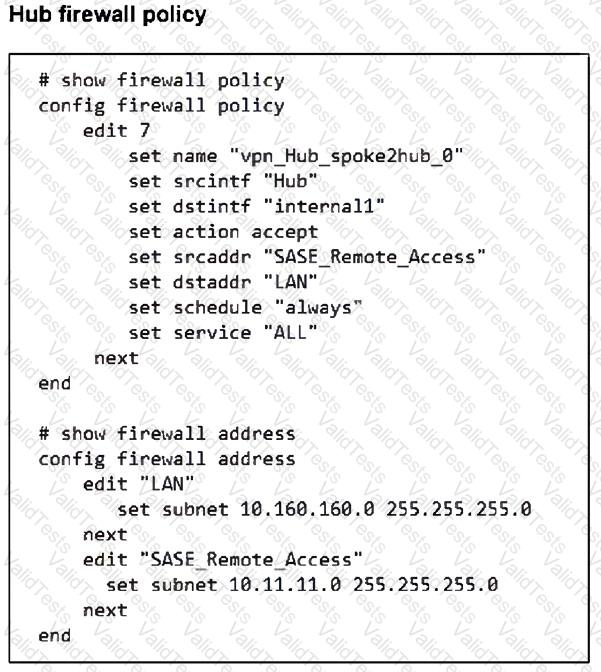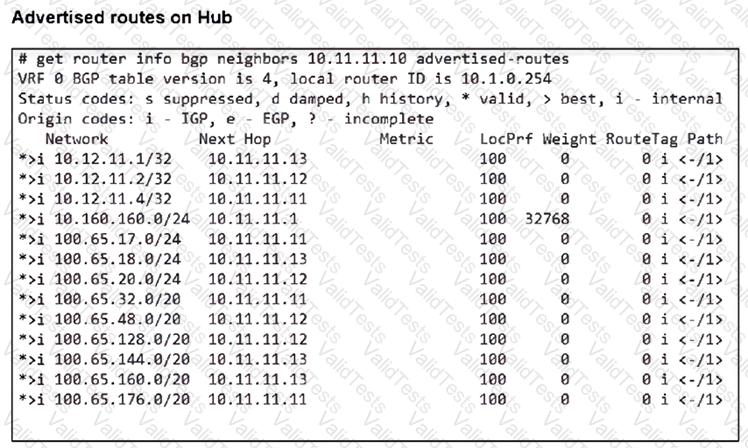
View all detail and faqs for the FCSS_SASE_AD-25 exam
Which two of the following can release the network lockdown on the endpoint applied by FortiSASE? (Choose two.)\
What are two benefits of deploying secure private access with SD-WAN? (Choose two.)
Refer to the exhibits.





A FortiSASE administrator has configured FortiSASE as a spoke to a FortiGate hub. The tunnel is up to the FortiGate hub. However, the remote FortiClient is not able to access the web server hosted behind the FortiGate hub.
Based on the exhibits, what is the reason for the access failure?
Which two settings are automatically pushed from FortiSASE to FortiClient in a new FortiSASE deployment with default settings? (Choose two.)
Which two are required to enable central management on FortiSASE? (Choose two.)
In the Secure Private Access (SPA) use case, which two FortiSASE features facilitate access to corporate applications? (Choose two.)
What is required to enable the MSSP feature on FortiSASE?
Which FortiSASE component protects users from online threats by hosting their browsing sessions on a remote container within a secure environment?
Which two advantages does FortiSASE bring to businesses with microbranch offices that have FortiAP deployed for unmanaged devices? (Choose two.)
An organization must block user attempts to log in to non-company resources while using Microsoft Office 365 to prevent users from accessing unapproved cloud resources.
Which FortiSASE feature can you implement to meet this requirement?